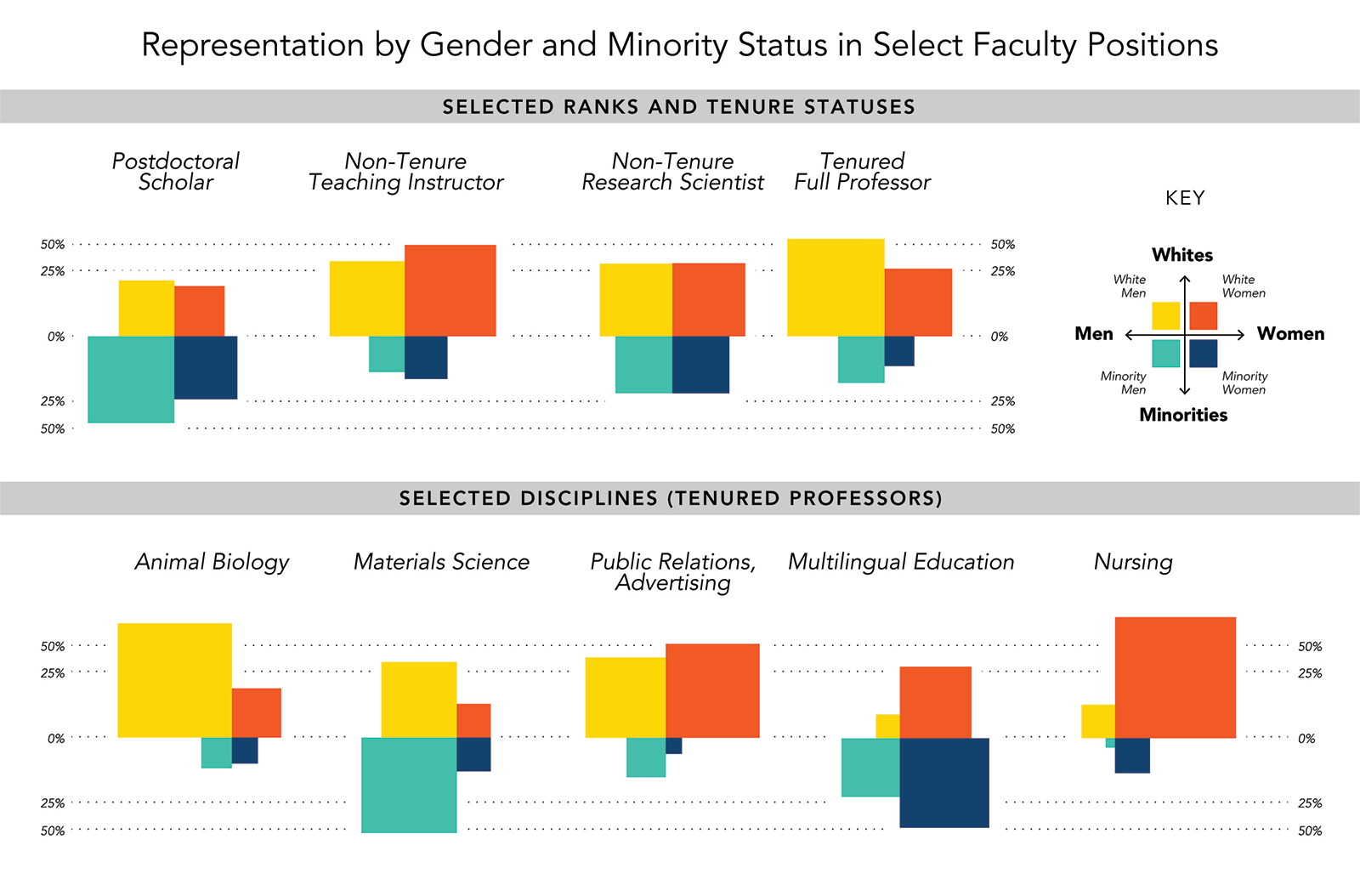The Faculty Workforce Is Aging … Is the Pipeline More Diverse?
Like much of the American workforce, college and university professors are aging — the majority are between the ages of 55 and 75. As these baby boomers (who are mostly White males) near retirement, what do their successors look like? Are higher education institutions doing a good enough job of hiring more diverse faculty to complement their increasingly diverse student bodies?
Data from CUPA-HR’s 2017-18 Faculty in Higher Education Survey suggest that colleges and universities are recruiting and hiring more women and people of color for entry-level faculty positions, but these numbers drop off at higher ranks, and women and some minorities are not paid equitably at these higher ranks.
Representation of Women and People of Color
Much like administrators in higher ed, high-ranking faculty members are more likely to be White males:
- While nearly two-thirds of all instructors and half of new assistant and assistant professors are women, women’s representation drops to around one-third at the rank of professor.
- Overall, minorities are best represented in non-tenure track research faculty. Non-tenure track teaching faculty have the least minority representation.
- The majority of department heads are White males.

Pay Inequities
Data from the faculty survey also indicate pay inequities for women and some people of color, especially in the higher ranks:
- For teaching faculty, women make lower salaries than do men across the board.
- In a departure from the salary gaps noted for most faculty, female new assistant professors in non-tenure track research positions are paid much more than their male counterparts.
- For teaching faculty, racial/ethnic minorities make equitable or higher salaries compared to White faculty.
- While non-tenure track research faculty of color earn more than Whites in the rank in which they are least represented (new assistant professor), their pay gets progressively lower with promotions in rank.
So what can we deduce from these findings? It appears that higher ed as a whole is beginning to move in the right direction as far as diversifying the faculty workforce and attending to pay equity in positions where the representation of women or minorities is visibly low, but there is still much work to be done to ensure that students are seeing a reflection of themselves when they enter a college classroom.
About the Survey
A total of 238,698 full-time faculty positions were reported for this year’s Faculty in Higher Education Survey. Supplemental salary and course relief data were collected on 9,419 department heads. Salary data on more than 70,000 adjunct faculty were collected in aggregate form. CUPA-HR’s Faculty in Higher Education Survey is the only survey that provides data for the current academic year, maintains institution anonymity, collects data by rank and specific discipline, and collects comprehensive demographic data.
Read about the trends in faculty salary increases and faculty makeup over the past few years; read an overview of this year’s Faculty in Higher Education Report; and order survey results.


